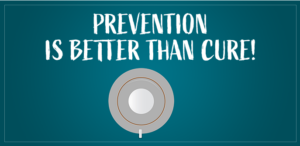By: Dr. Seifrabiee, CEO of EverywhereClinic

What Employers Can Do
Thankfully, employers are not completely powerless to the many distinct, potential slips and falls hazards in their workplaces. The key is to remain organized and proactive, recognizing what these hazards are and staying ahead of them before they harm a person doing their job.
Regular Fall Hazard Assessments
In order to stay ahead of occupational fall hazards, it’s key to assess them on a regular basis, documenting all existing as well as future dangers that could harm employees down the road. Fall hazards and risks can easily shift with changes in staff or weather. So make sure assessments are conducted consistently or as needed.
Ongoing Safety Training
One of the most effective methods to proactively make sure people can perform their work around fall hazards safely is through safety training. Determine the type of training according to whichever fall hazards have been identified and require the financial and time commitment for this level of safety education.
Regular Clearing of Walkways
This may be an obvious point. However, the walkways in work environments must be always cleared of clutter and tripping hazards like electrical cords. What isn’t as obvious is committing to this practice and making it a habit within the workplace, incorporating it into daily tasks and routines.
Fall Protection Technology
In addition to safety practices, employees can be equipped with fall detection apps and wearables which can request immediate emergency help if the worker experiences an injury. In real time, fall protection devices will detect a dangerous impact and get help to the worker’s location as quickly as possible.
Provide proper footwear
Employees can also be provided with properly fitting footwear that can grip the surfaces they are working on more effectively and comfortably. In some cases, specific PPE footwear may be required, however, this can also be determined in the fall hazard assessment.
Develop Fall Protection Plan
Overarching all of this can be a fall protection plan, which outlines all of the procedures and policies that can help employees reduce the number of fall hazards in the workplace. OSHA has developed a template for a Fall Protection Plan that “must be developed and evaluated on a site-by-site basis.” Additionally, “it is recommended that builders discuss the written Fall Protection Plan with their OSHA Area Office prior to going on a jobsite.”
Be Prepared
No matter what, fall hazards are going to exist in the workplace and on worksites. However, employees can be prepared for the hazards and aware that they exist as well as what can be done now to prevent someone from spraining a limb at work or much worse.
ref: https://ohsonline.com/Articles/2024/02/26/Falls-are-a-Major-Occupational-Threat-How-Do-I-Protect-My-People.aspx?oly_enc_id=&Page=2#










